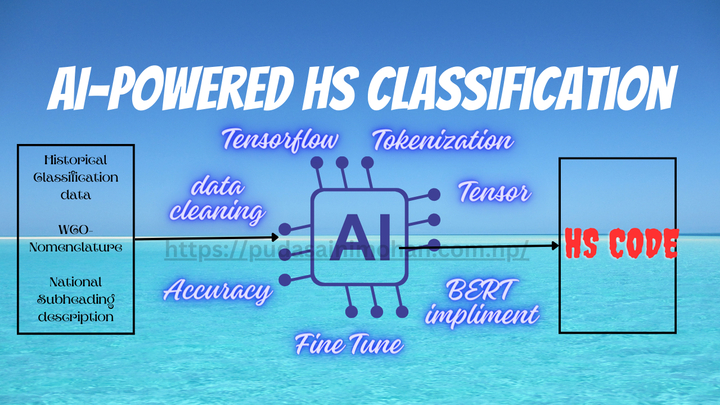HS Code Classification Model

In today’s globalized world, international trade serves as the lifeblood of economic growth. The seamless exchange of goods across borders has never been more crucial, and at the heart of this intricate process lies the Harmonized System (HS). HS codes, standardized numerical identifiers assigned to products, play a pivotal role in streamlining the import and export of goods worldwide. This robust system was created by the World Customs Organization (WCO) to provide a common framework for classifying products, ensuring consistency and efficiency in global trade. However, accurately classifying products can be a daunting challenge for both customs authorities and businesses alike, given the complexity and scope of modern international commerce.
But fear not, for the advent of artificial intelligence (AI) and machine learning has ushered in a new era of efficiency and precision in the realm of HS code classification. In this post, we introduce you to our revolutionary HS code classification model, powered by the BERT architecture, which promises to make the process smoother than ever before.
Understanding the HS Classification Model
Our model is designed to classify products based on user-provided descriptions. It offers a breakthrough solution by presenting the top three most likely HS codes for a given product description. What’s even more remarkable is that we’ve tailored this model to the specific context of Nepal, a country that uses an 8-digit level HS code classification system.
Additionally, our model is versatile and user-friendly. It caters to a wider audience by accepting product descriptions in three languages: English, Nepali, and Romanized Nepali text. This multilingual capability ensures that users from different linguistic backgrounds can easily utilize the model to classify products, making international trade even more accessible.
The Power of BERT and the Fight Against Fraud
Our preliminary version of the model is constructed using a deep neural network based on the BERT architecture. BERT (Bidirectional Encoder Representations from Transformers) is renowned for its natural language processing capabilities, which enable it to understand and interpret textual data more comprehensively. By harnessing the power of BERT, our HS code classification model not only simplifies the classification process but also enhances its accuracy.
Beyond simply improving efficiency, our model also serves as a valuable tool in mitigating fraudulent activities. Accurate product classification is a fundamental step in preventing goods from being misclassified, which can lead to underpayment of customs duties and taxes. By reducing the probability of fraudulent activities, our model contributes to the integrity of international trade.
In conclusion, our HS code classification model represents a significant step forward in the world of international trade. Its ability to efficiently and accurately classify products, its multilingual support, and its application in Nepal’s 8-digit HS code context make it a valuable asset for businesses, customs authorities, and trade professionals. As we continue to refine and expand upon this model, it has the potential to revolutionize the way we approach global trade.
To see our model in action and learn more about its features, check out the following video:
Stay tuned for more updates on our journey to enhance international trade through the power of AI and HS code classification.